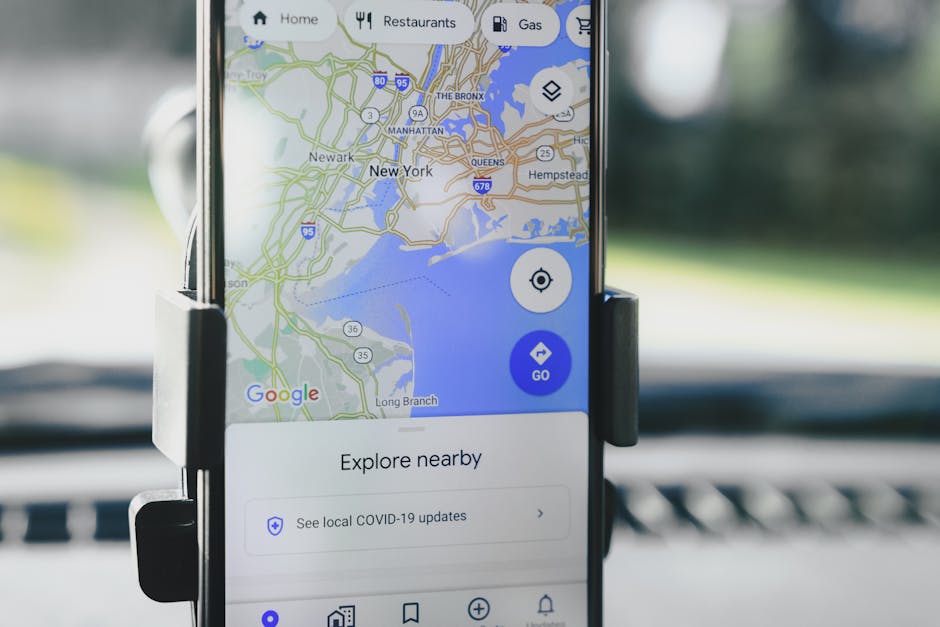Google Maps vs. Waze: Which Navigation App is Better?

Google Maps and Waze are two of the most popular navigation apps available today, each offering unique features and capabilities. Both owned by Google, these apps serve millions of users worldwide, helping them navigate through urban jungles and rural landscapes alike. While they share some similarities, there are distinct differences that might make one better suited to your needs than the other.
User Interface and Experience
Google Maps is known for its clean, user-friendly interface that caters to a wide range of users. The app provides detailed maps, street views, and satellite images, making it easy for users to get a comprehensive understanding of their surroundings. It offers turn-by-turn navigation, real-time traffic updates, and various route options, all presented in an easy-to-read format.
On the other hand, Waze focuses more on the social aspect of navigation. The app's interface is designed to provide real-time updates from other drivers on the road. Users can report accidents, traffic jams, police presence, and other road hazards, which are then shared with the community. This crowd-sourced information can be incredibly valuable for avoiding delays and finding the fastest routes.
While both apps are relatively easy to use, Google Maps may appeal more to those who prefer a straightforward navigation tool without too many distractions. Waze, however, is ideal for users who enjoy being part of a driving community and appreciate real-time updates from fellow drivers.
Features and Functionalities
Google Maps offers a wide array of features that go beyond basic navigation. It includes public transit information, bike routes, walking directions, and even indoor maps for large buildings like airports and shopping malls. Additionally, Google Maps integrates with other Google services such as Google Search and Google Earth, providing a seamless experience across platforms.
Waze stands out with its unique crowd-sourcing features. Users can actively report road conditions, which helps others avoid potential issues. Waze also offers fun features like customizable avatars and voices for navigation instructions. Moreover, the app provides alternative routes based on real-time data from other drivers, often suggesting shortcuts that traditional GPS systems might overlook.
Another notable feature of Waze is its ability to integrate with music streaming apps like Spotify. This allows users to control their music without leaving the navigation screen. While Google Maps also supports music integration, it is not as deeply embedded into the user experience as it is in Waze.
Accuracy and Reliability
When it comes to accuracy and reliability, both Google Maps and Waze have their strengths. Google Maps benefits from Google's extensive mapping infrastructure and data collection efforts. The app provides highly accurate maps and up-to-date information on road conditions, making it a reliable choice for most users.
Waze relies heavily on user-generated data to provide real-time updates on traffic conditions and road hazards. While this crowd-sourced approach can lead to highly accurate information during peak hours when many users are active, it might be less reliable in areas with fewer users or during off-peak times.
In terms of offline capabilities, Google Maps allows users to download maps for offline use—a feature that can be incredibly useful in areas with poor internet connectivity. Waze does not offer this functionality to the same extent, which could be a drawback for some users.
Privacy Concerns
Privacy is an important consideration when using any app that tracks your location. Both Google Maps and Waze collect data on users' movements to improve their services. However, there are differences in how this data is handled.
Google Maps collects location data even when the app is not in use if background location tracking is enabled. This information is used to provide personalized recommendations and improve map accuracy but raises concerns about user privacy.
Waze also collects location data but emphasizes anonymity more strongly in its privacy policies. The app uses aggregated data from multiple users to generate traffic reports and other updates without identifying individual drivers.
Comparison Table
| Feature | Google Maps | Waze |
|---|---|---|
| User Interface | Straightforward, clean design | Interactive with social features |
| Navigation Accuracy | Highly accurate with extensive data | User-generated real-time updates |
| Offline Capabilities | Supports offline maps | Limited offline functionality |
| Privacy Measures | Collects background data | Anonymizes user data |
| Integration with Other Services | Strong integration with Google services | Integrates with music streaming apps like Spotify |
User Preferences and Customization Options
Both apps offer customization options that cater to different user preferences. Google Maps allows users to customize their map views by toggling between different layers such as satellite view, terrain view, or traffic view. Additionally, users can save favorite locations like home or work for quicker access during daily commutes.
- User Interface:
- Straightforward:
- Simplistic Design:
- User-Generated Content:
The app also provides personalized recommendations based on previous searches or visited locations. This makes planning trips easier by offering suggestions for restaurants or attractions nearby.
Crowdsourcing Features:
- Avoiding Traffic Jams:
- Avoiding Road Hazards:
- Avoiding Police Presence:
